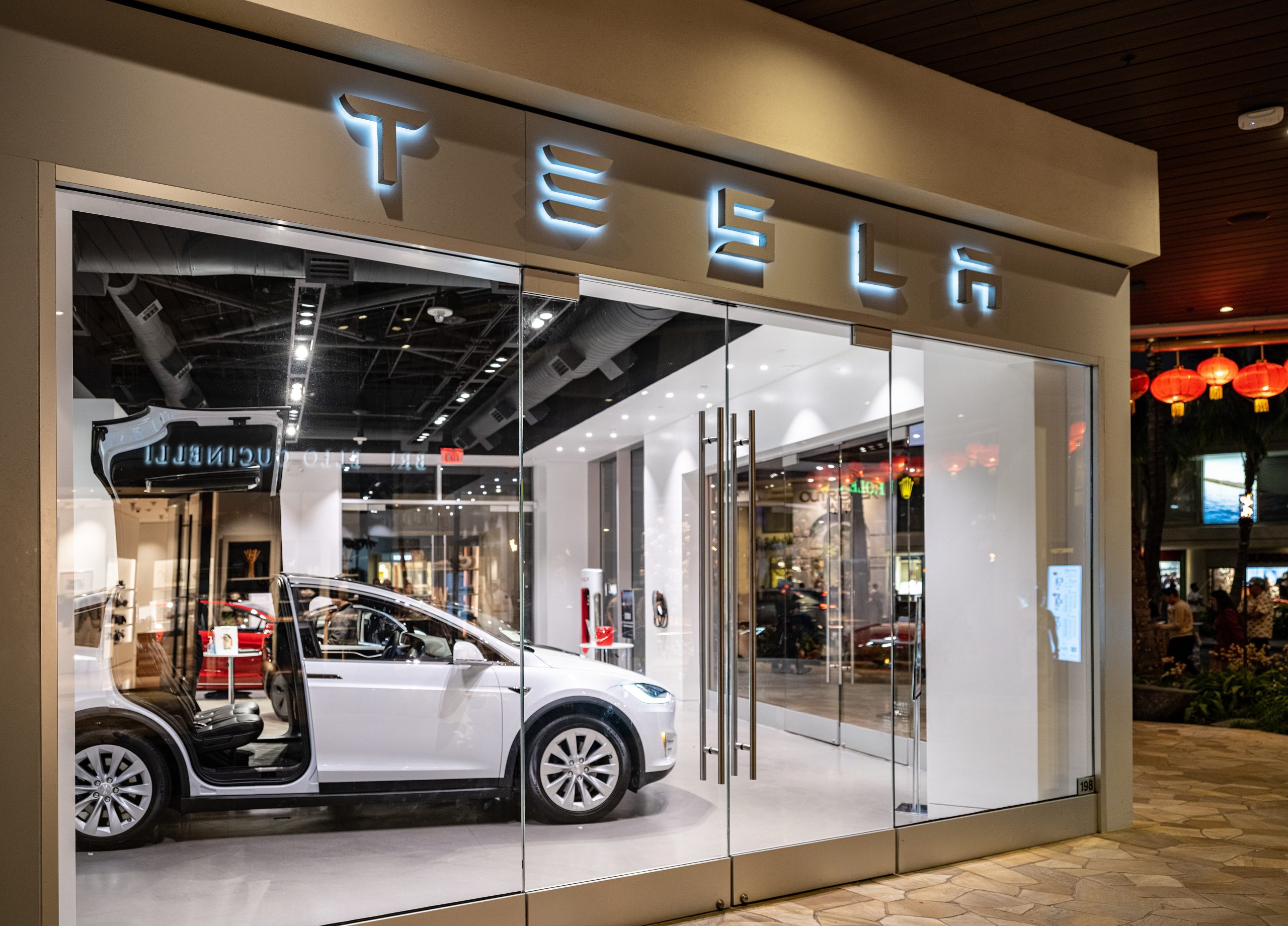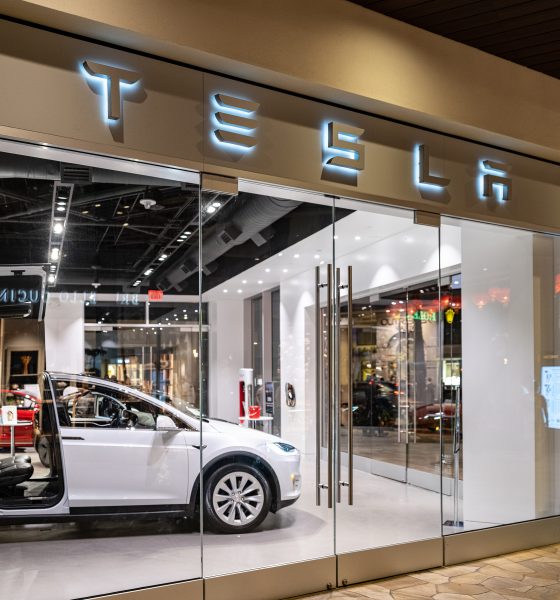

Investor's Corner
Tesla (TSLA) Q2 2022 earnings results: Analysts’ revenue estimates met, EPS expectations exceeded
Tesla (NASDAQ:TSLA) posted its second-quarter 2022 earnings report after markets closed today. The results, which were discussed in the Q2 2022 Update Letter, were released after the closing bell on Wednesday, July 20, 2022.
Tesla faced headwinds in the second quarter, with the company producing a total of 258,580 vehicles and delivering 254,695. Tesla’s figures could be attributed to Giga Shanghai’s Covid-related shutdowns in April, which cost the company several weeks’ worth of vehicle production.
The following is a quick overview of Tesla’s Q2 2022 results.
REVENUE
Tesla posted total revenues of $16.934B billion with a gross profit of $4.234B billion. In comparison, analysts expected Tesla to post revenue of $16.9 billion. Overall, Tesla’s revenue grew 42% year-over-year.
EARNINGS PER SHARE
Tesla posted non-GAAP earnings per share of $2.27 per share. In comparison, analysts were expecting Tesla to post adjusted earnings per share of $1.83.
CASH
Tesla posted operating cash flow less CAPEX of $621 million in the second quarter. In total, the company was able to add $0.88 billion in its cash and cash equivalents to $18.3 billion in Q2 2022. Tesla noted that it converted approximately 75% of its Bitcoin purchases into fiat currency, bringing in $936M of cash to the company’s balance sheet.
PROFITABILITY
Tesla posted $2.5B GAAP operating income; 14.6% operating margin in Q2 2022, $2.3B GAAP net income; $2.6B non-GAAP net income (ex-SBC1) in the second quarter, and 27.9% GAAP automotive gross margin in Q2. Tesla’s operating income improved YoY to $2.5B in Q2, resulting in a 14.6% operating margin.
OTHER NOTABLE UPDATES
The Fremont factory was able to produce a record number of vehicles in the second quarter. The next generation of 4680 cell machinery has also been installed in Giga Texas. The new 4680 machinery are currently in the process of being commissioned.
Gigafactory Shanghai currently has a capacity of over 750,000 vehicles per year, but the facility will soon be able to produce more after its upgrades this month.
Giga Berlin exhibited strong production rate improvement at the end of the second quarter, with Tesla Germany producing more than 1,000 Model Y in one week. These vehicles are also equipped with 2170 cells, and thus still use more parts.
As for Full Self-Driving and Autopilot, the FSD Beta group has now increased to over 100,000 drivers. Tesla Vision is also now being used for other features such as tightening seatbelts earlier in certain crashes.
Tesla Energy deployments decreased by 11% year-over-year in the second quarter to just 1.1 GWh, mainly due to semiconductor challenges. Solar deployments increased by 25% YoY in Q2 to 106 MW, however.
Below is Tesla’s Q2 2022 Update Letter.
Disclaimer: I am long TSLA.
Don’t hesitate to contact us with news tips. Just send a message to simon@teslarati.com to give us a heads up.

Investor's Corner
SpaceX IPO is coming, CEO Elon Musk confirms
However, it appears Musk is ready for SpaceX to go public, as Ars Technica Senior Space Editor Eric Berger wrote an op-ed that indicated he thought SpaceX would go public soon. Musk replied, basically confirming it.

Elon Musk confirmed through a post on X that a SpaceX initial public offering (IPO) is on the way after hinting at it several times earlier this year.
It also comes one day after Bloomberg reported that SpaceX was aiming for a valuation of $1.5 trillion, adding that it wanted to raise $30 billion.
Musk has been transparent for most of the year that he wanted to try to figure out a way to get Tesla shareholders to invest in SpaceX, giving them access to the stock.
He has also recognized the issues of having a public stock, like litigation exposure, quarterly reporting pressures, and other inconveniences.
However, it appears Musk is ready for SpaceX to go public, as Ars Technica Senior Space Editor Eric Berger wrote an op-ed that indicated he thought SpaceX would go public soon.
Musk replied, basically confirming it:
As usual, Eric is accurate
— Elon Musk (@elonmusk) December 10, 2025
Berger believes the IPO would help support the need for $30 billion or more in capital needed to fund AI integration projects, such as space-based data centers and lunar satellite factories. Musk confirmed recently that SpaceX “will be doing” data centers in orbit.
AI appears to be a “key part” of SpaceX getting to Musk, Berger also wrote. When writing about whether or not Optimus is a viable project and product for the company, he says that none of that matters. Musk thinks it is, and that’s all that matters.
It seems like Musk has certainly mulled something this big for a very long time, and the idea of taking SpaceX public is not just likely; it is necessary for the company to get to Mars.
The details of when SpaceX will finally hit that public status are not known. Many of the reports that came out over the past few days indicate it would happen in 2026, so sooner rather than later.
But there are a lot of things on Musk’s plate early next year, especially with Cybercab production, the potential launch of Unsupervised Full Self-Driving, and the Roadster unveiling, all planned for Q1.
Investor's Corner
Tesla Full Self-Driving statistic impresses Wall Street firm: ‘Very close to unsupervised’
The data shows there was a significant jump in miles traveled between interventions as Tesla transitioned drivers to v14.1 back in October. The FSD Community Tracker saw a jump from 441 miles to over 9,200 miles, the most significant improvement in four years.

Tesla Full Self-Driving performance and statistics continue to impress everyone, from retail investors to Wall Street firms. However, one analyst believes Tesla’s driving suite is “very close” to achieving unsupervised self-driving.
On Tuesday, Piper Sandler analyst Alexander Potter said that Tesla’s recent launch of Full Self-Driving version 14 increased the number of miles traveled between interventions by a drastic margin, based on data compiled by a Full Self-Driving Community Tracker.
🚨 Piper Sandler reiterated its Overweight rating and $500 PT on Tesla $TSLA stock
Analyst Alexander Potter said FSD is near full autonomy and latest versions showed the largest improvement in disengagements, from 440 miles to 9,200 miles between critical interventions pic.twitter.com/u4WCLfZcA9
— TESLARATI (@Teslarati) December 9, 2025
The data shows there was a significant jump in miles traveled between interventions as Tesla transitioned drivers to v14.1 back in October. The FSD Community Tracker saw a jump from 441 miles to over 9,200 miles, the most significant improvement in four years.
Interestingly, there was a slight dip in the miles traveled between interventions with the release of v14.2. Piper Sandler said investor interest in FSD has increased.
Full Self-Driving has displayed several improvements with v14, including the introduction of Arrival Options that allow specific parking situations to be chosen by the driver prior to arriving at the destination. Owners can choose from Street Parking, Parking Garages, Parking Lots, Chargers, and Driveways.
Additionally, the overall improvements in performance from v13 have been evident through smoother operation, fewer mistakes during routine operation, and a more refined decision-making process.
Early versions of v14 exhibited stuttering and brake stabbing, but Tesla did a great job of confronting the issue and eliminating it altogether with the release of v14.2.
Tesla CEO Elon Musk also recently stated that the current v14.2 FSD suite is also less restrictive with drivers looking at their phones, which has caused some controversy within the community.
Although we tested it and found there were fewer nudges by the driver monitoring system to push eyes back to the road, we still would not recommend it due to laws and regulations.
Tesla Full Self-Driving v14.2.1 texting and driving: we tested it
With that being said, FSD is improving significantly with each larger rollout, and Musk believes the final piece of the puzzle will be unveiled with FSD v14.3, which could come later this year or early in 2026.
Piper Sandler reaffirmed its $500 price target on Tesla shares, as well as its ‘Overweight’ rating.
Investor's Corner
Tesla gets price target boost, but it’s not all sunshine and rainbows

Tesla received a price target boost from Morgan Stanley, according to a new note on Monday morning, but there is some considerable caution also being communicated over the next year or so.
Morgan Stanley analyst Andrew Percoco took over Tesla coverage for the firm from longtime bull Adam Jonas, who appears to be focusing on embodied AI stocks and no longer automotive.
Percoco took over and immediately adjusted the price target for Tesla from $410 to $425, and changed its rating on shares from ‘Overweight’ to ‘Equal Weight.’
Percoco said he believes Tesla is the leading company in terms of electric vehicles, manufacturing, renewable energy, and real-world AI, so it deserves a premium valuation. However, he admits the high expectations for the company could provide for a “choppy trading environment” for the next year.
He wrote:
“However, high expectations on the latter have brought the stock closer to fair valuation. While it is well understood that Tesla is more than an auto manufacturer, we expect a choppy trading environment for the TSLA shares over the next 12 months, as we see downside to estimates, while the catalysts for its non-auto businesses appear priced at current levels.”
Percoco also added that if market cap hurdles are achieved, Morgan Stanley would reduce its price target by 7 percent.
Perhaps the biggest change with Percoco taking over the analysis for Jonas is how he will determine the value of each individual project. For example, he believes Optimus is worth about $60 per share of equity value.
He went on to describe the potential value of Full Self-Driving, highlighting its importance to the Tesla valuation:
“Full Self Driving (FSD) is the crown jewel of Tesla’s auto business; we believe that its leading-edge personal autonomous driving offering is a real game changer, and will remain a significant competitive advantage over its EV and non-EV peers. As Tesla continues to improve its platform with increased levels of autonomy (i.e., hands-off, eyes-off), it will revolutionize the personal driving experience. It remains to be seen if others will be able to keep pace.”
Additionally, Percoco outlined both bear and bull cases for the stock. He believes $860 per share, “which could be in play in the next 12 months if Tesla manages through the EV-downturn,” while also scaling Robotaxi, executing on unsupervised FSD, and scaling Optimus, is in play for the bull case.
Will Tesla thrive without the EV tax credit? Five reasons why they might
Meanwhile, the bear case is placed at $145 per share, and “assumes greater competition and margin pressure across all business lines, embedding zero value for humanoids, slowing the growth curve for Tesla’s robotaxi fleet to reflect regulatory challenges in scaling a vision-only perception stack, and lowering market share and margin profile for the autos and energy businesses.”
Currently, Tesla shares are trading at around $441.








